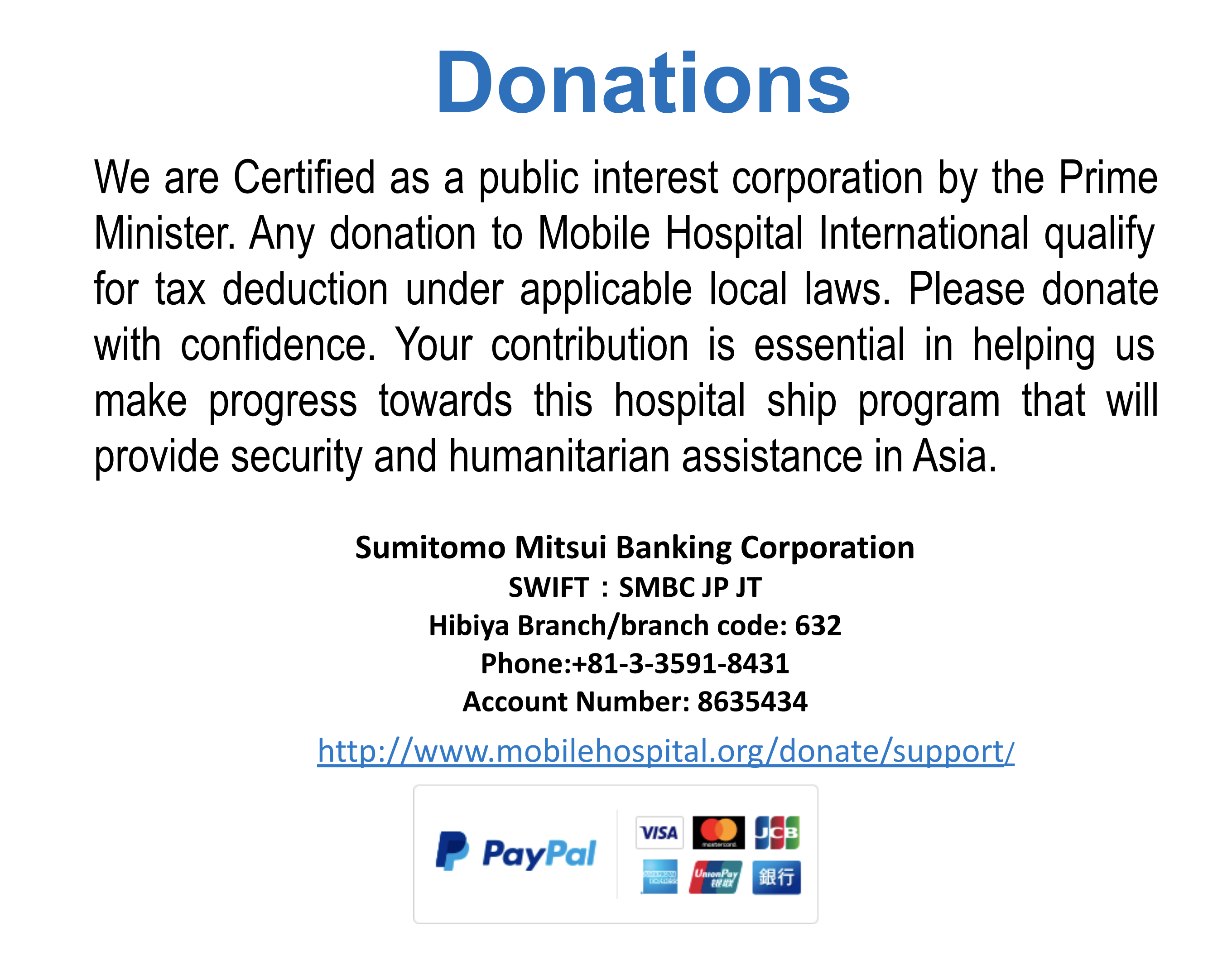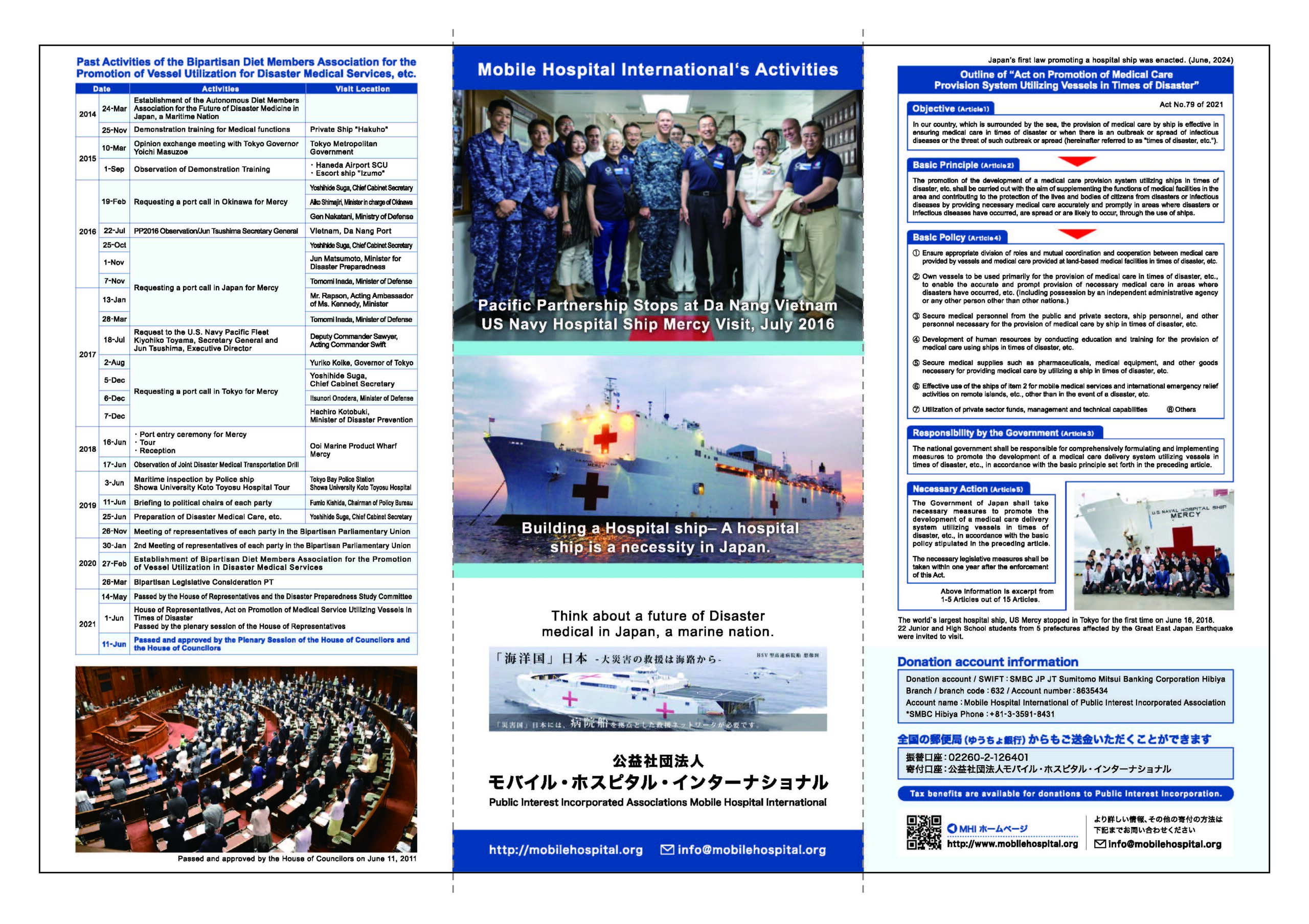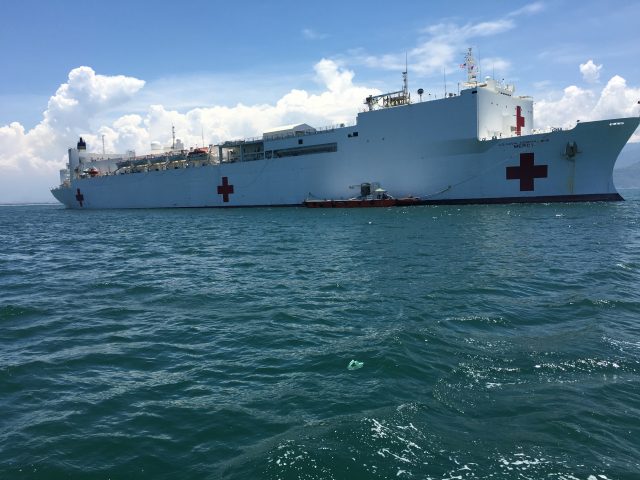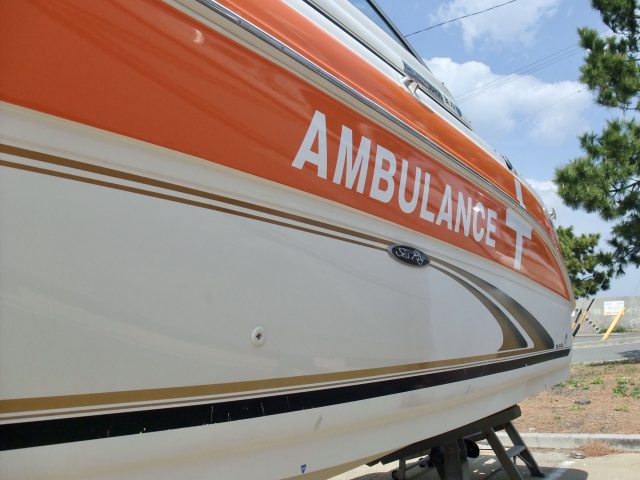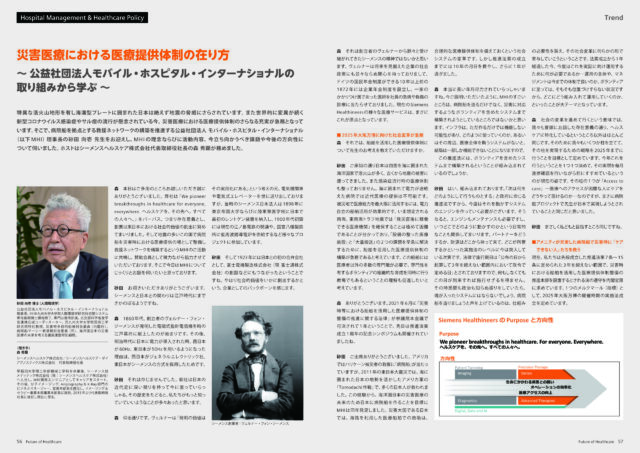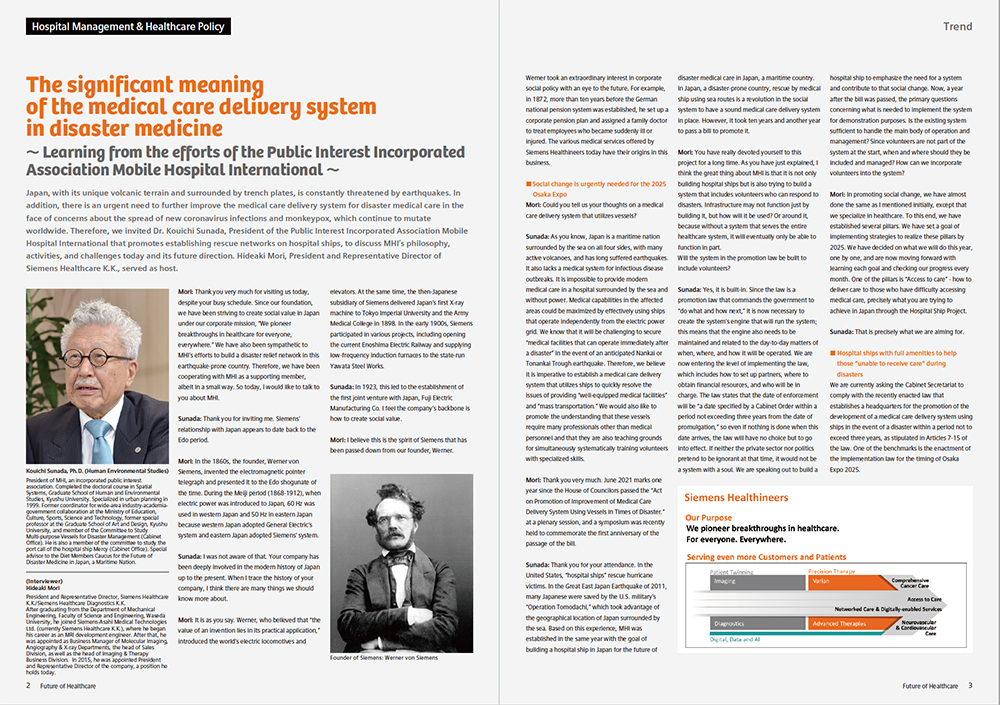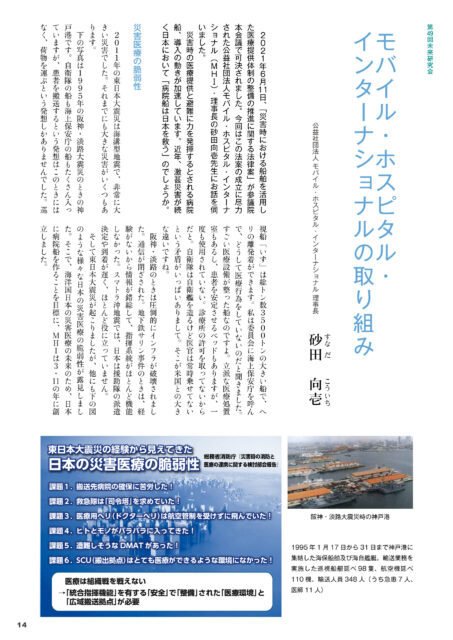Japan should – like other countries – build and operate hospital ships
日本は–他の国ように–病院船を構築および運航する
秋元大輔
AKIMOTO DAISUKE
Not only in responding to disasters at home, a floating hospital can advance Japan’s interests in the region.
A curious anomaly in Japan is that official hospital ships have not been built or used since the end of the Second World War. This is despite the fact that Japan has regular disasters, such as earthquakes, typhoons, tsunamis, volcano eruptions, and floods. In such devastating disasters, medical assistance by hospital ships at sea would be of tremendous assistance particularly when hospitals, medical services, and transportation networks on land are inoperable.
Indeed, the coronavirus crisis aboard the Princess Diamond cruise ship is a case in point. 3000 passengers and 1000 crew members are stuck off Yokohama aboard the cruise ship that was sailing around the East Asian region. The identification of those infected and the isolation process could probably have been handled more effectively and efficiently by a medical team based on a hospital ship.
Why is it so difficult for Japan to possess hospital ships?
In most countries, hospital ships belong to their military forces. USNS Mercy and USNS Comfort, for example, are operated by the US Navy. A key sticking point is that Japanese Self-Defense Forces are not classified as “military” under Article 9 of the Japanese Constitution. Another problematic issue is that there is no legislation for ships to conduct medical care beyond a certain prefecture in Japan. As such, the Ministry of Health, Labour and Welfare cannot authorise ships that can act as hospitals.
USNS Mercy during a 2018 port visit to Yokosuka, Japan (Photo: US Pacific Fleet/Flickr)
More critically, building hospital ships and maintaining medical doctors and nurses on hospital ships is an expensive business, and requires budgetary support during a period of spiraling debt and government austerity measures.
Nonetheless, Japan needs hospital ships. Three reasons are key.
First, medical assistance by hospital ships could be vital for disaster relief and contribute to survival of Japanese citizens and the maintenance of Japan’s national interests. In fact, the Japanese government has forecast a 70% chance that a massive “Metropolitan Earthquake” of a magnitude of 7.3 (with a death toll of approximately 23,000), and a “Nankai Trough Earthquake” of a magnitude of 8 to 9 (with a death toll of approximately 323,000) could happen within 30 years.
Second, Japan’s hospital ships would be able to contribute to international cooperation, especially humanitarian assistance and disaster relief (HADR) in the event of devastating disasters in the Asia Pacific region.
Third, Japan’s possession of hospital ships would strengthen Japan-US relations on the basis of the bilateral military alliance. Japan’s hospital ships would be able to conduct educational exchanges and medical training in preparation for future national disasters. As the rotation and dispatch frequency of US hospital ships for international HA/DR is limited, Japanese hospital ships could supplement the role played by US hospital ships in the Indo-Pacific region.
Building and maintaining
hospital ships from
scratch is costly, but
the new legislation will
enable the Japanese
government to use
already-existing official
or private ships as
“multi-purpose disaster-
relief medical ships”.
Attempts have been made to develop hospital ships without success so far. One month after the 11 March 2011 earthquake in Japan, for example, the “All-party Parliamentary Group to Build Hospital Ships” was established. According to the president of the parliamentary group, Seishiro Eto, of the Liberal Democratic Party (LDP), the group was planned to create lawmaker-initiated legislation with a view to building hospital ships. Within three years however, the lack of treasury resources and bureaucratic support led to the group’s demise. In short, without an appropriate legal basis and an approved budget, it was impossible for Japan to create hospital ships from scratch.
A second attempt, the “Parliamentary Group to Consider the Future of Disaster Medical Care of Japan as a Maritime Nation”, was established in March 2014 by the ruling coalition parties, the LDP and Komeito. In response to the request by the parliamentary group, USNS Mercy (the largest hospital ship in the world), docked at Ota ward in Tokyo on 16 June 2018 to allow an inspection tour by Japanese lawmakers, government officials, and medical experts. In March 2019, Fukushiro Nukaga, a Diet member of the LDP and the president of the parliamentary group, announced a draft outline of new lawmaker-initiated legislation.
なぜ日本は病院船を所有することがそれほど難しいのですか?
日本の奇妙な異常は、第二次世界大戦の終結以来、公式の病院船が建造または使用されていないことです。これは、日本では地震、台風、津波、火山噴火、洪水などの定期的な災害があるという事実にもかかわらずです。このような壊滅的な災害では、海上での病院船による医療支援は、特に病院、医療サービス、陸上輸送ネットワークが機能しない場合に多大な支援となります。
「海洋国日本の災害医療の未来を考える議院連盟(議会グループ)」は、与党の与党、自民党と公明党によって2014年3月に設立されました。議会グループの要請に応えて、USNSマーシー(世界最大の病院船)が2018年6月16日に東京の大田区に停泊し、日本の議員、政府関係者、および医療専門家による視察ツアーを許可しました。2019年3月、自民党の国会議員で議会議会議長である額賀福志郎氏は、新しい立法者主導の立法の概要案を発表した。
病院船をゼロから建造して維持するには費用がかかりますが、新しい法律により、日本政府は既存の公用または私用船を「多目的災害救援医療船」として使用できるようになります。議員主導の立法は、与党と野党の両方の国会議員によってサポートされる必要があるため、議会グループが「全党」の議会グループに拡大することは戦略的です。強力な超党派の支持のある議会グループは、2020年に新しい法律を制定する上でより大きな成功を収めることが期待されています。
日本は、国または民間の病院船や多目的災害救援医療船を所有するために、財政的および官僚的障壁を克服する必要があります。日本の定期的な災害の発生を考えると、医療船は日本とアジア太平洋地域で多くの命を救うことができます。
日本には病院船が必要です。3つの理由が重要です。
第一に、病院船による医療援助は、災害救援に不可欠であり、日本人の生存と日本の国益の維持に貢献する可能性があります。実際、日本政府は70%の確率で、マグニチュード7.3の大規模な「大都市地震」(約23,000人の死者数)、およびマグニチュード8〜9の「南海トラフ地震」( 30年以内に約323,000人の死者が出る可能性があります。
第二に、日本の病院船は、国際協力、特にアジア太平洋地域で壊滅的な災害が発生した場合の人道援助と災害救援(HADR)に貢献することができます。
第三に、日本が病院船を保有することは、二国間軍事同盟に基づいて日米関係を強化することになる。日本の病院船は、将来の国家災害に備えて、教育交流と医療訓練を実施することができるでしょう。国際的なHA / DRのための米国の病院船のローテーションと派遣の頻度は限られているため、日本の病院船は、インド太平洋地域の米国の病院船が果たす役割を補うことができます。
Building and maintaining hospital ships from scratch is costly, but the new legislation will enable the Japanese government to use already-existing official or private ships as “multi-purpose disaster-relief medical ships”. The lawmaker-initiated legislation needs to be supported by Diet members of both ruling and opposition parties, and therefore it is strategic for the parliamentary group to expand itself to an “all-party” parliamentary group. It is anticipated that a parliamentary group with strong bipartisan support will have a greater chance of success in enacting the new legislation in 2020.
Japan needs to overcome its financial and bureaucratic obstacles in order to possess national or private hospital ships or multi-purpose disaster-relief medical ships. Given the regular occurrence of disasters in Japan, medical ships have the capacity to save a large number of lives in Japan, and in the Asia Pacific region.


